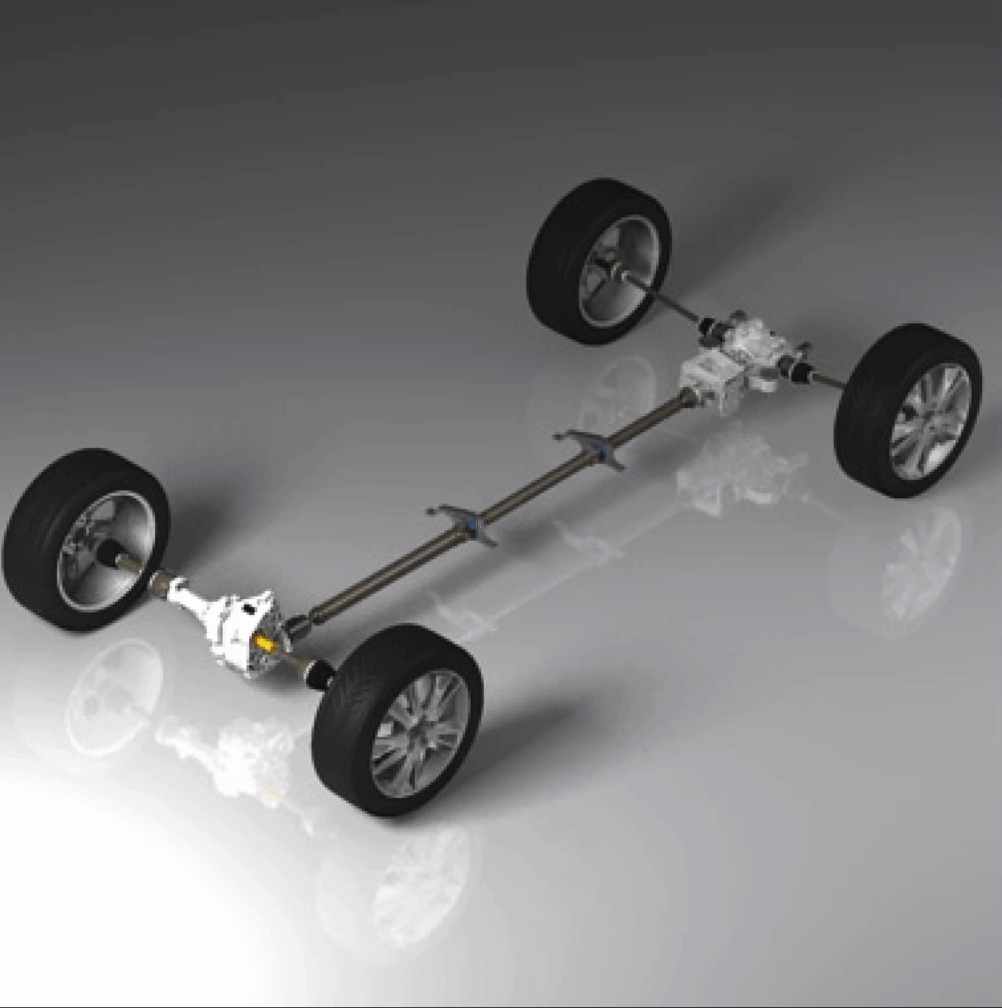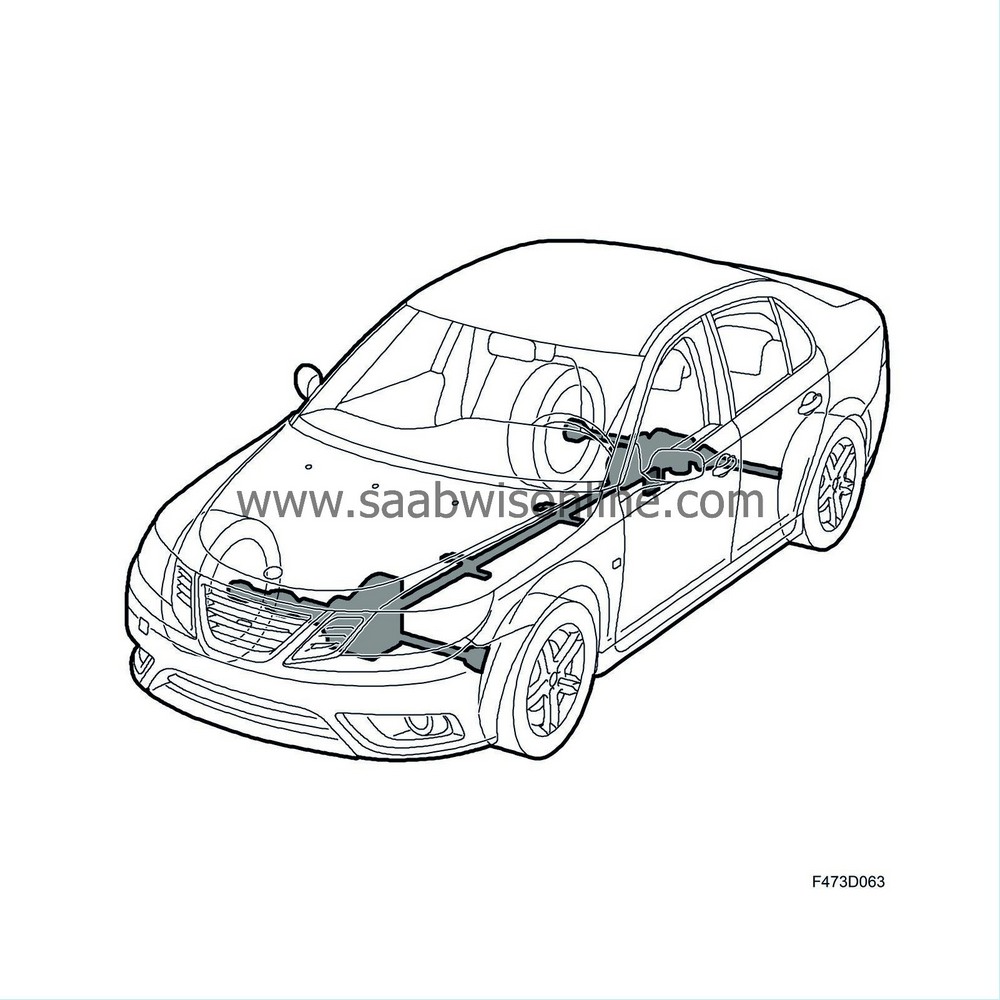Brief description
| Brief description |
| Introduction |
XWD is an active system for all-wheel drive which has been developed to optimise the vehicle's responsiveness and stability in all driving conditions. It optimises the transfer of drive torque between front and rear wheels according to the requirements of the circumstances, providing the driver with improved control.
It is controlled by its own electronic control module which works together with the ECM, TCM and ABS/ESP control modules. For the driver, this means maximum traction and strong, even acceleration with unnoticeable shifting of the drive torque between the wheels.
The chassis has been tuned with extreme precision and the XWD and ESP have been integrated with the focus on delivering optimum roadholding and performance.
| General |
A transfer case is bolted to the vehicle's normal gearbox and this transfers the power to the differential clutch via the propeller shaft.
The function of the differential clutch is to control the torque to the rear wheels and it is bolted to the limited slip differential.
| Transfer case |
 SWF
SWF
The transfer case, also named PTU, is located to the right of the gearbox, to which it is bolted. Its primary function is to take power from the gearbox and transfer it via a hypoid gear to the differential clutch via the propeller shaft. The intermediate shaft runs to the right-hand front wheel through the transfer case.
During manufacture the transfer case is filled with oil, which then does not require changing. The correct type of oil must be used without exception when filling. The incorrect type of oil may destroy the transfer case.
The transfer case is fully mechanical.
| Propeller shaft |
The function of the propeller shaft is to transfer power from the transfer case to the differential clutch. It consists of three pipe sections, a front Rzeppa joint, two Polhem joints in the centre and a rear Rzeppa joint.
The propeller shaft's support bearings are fitted by the Polhem joints. The bearings are mounted in rubber bushings which are fitted in brackets, and these in turn are bolted to the underside of the vehicle. The position of the brackets is very precisely measured during vehicle manufacture. The propeller shaft does not run in a straight line between the transfer case and the differential clutch but is instead gently curved, and this is to avoid vibration.
The position of the brackets must be marked very precisely when replacing the propeller shaft.
| Differential clutch |
The differential clutch, also named TTD, is located in front of the limited slip differential, to which it is bolted. The propeller shaft connects at the front edge to the differential clutch, and then at the rear edge directly to the limited slip differential's pinion via a shaft equipped with splines. The XWD control module is fitted on the housing.
The primary function of the differential clutch is to control the degree of drive (torque) to the rear wheels. It can be varied between 0-100% drive, which takes place by means of a hydraulically controlled multi-disc clutch. The hydraulic pressure is built up by an electrically driven pump, and is controlled by the XWD control module via a solenoid valve.
| Limited slip differential |
The limited slip differential, also named RDM, is located in the subframe and the drive shafts extend from it to each respective rear wheel. The final drive gear consists of a hypoid gear and a differential. The differential clutch is bolted to the limited slip differential with 4 bolts. The splines-equipped pinion shaft for the final drive gear is directly inserted into the disc cage for the differential clutch.
During manufacture the limited slip differential is filled with oil, which then does not require changing. The correct type of oil must be used without exception when filling. The incorrect type of oil may destroy the limited slip differential.
The limited slip differential is fully mechanical.
| Limited slip differential clutch |
The limited slip differential clutch, also named eLSD, is bolted with 6 bolts to the left-hand side of the limited slip differential. Its relative position is governed by two guide pins and a flange on the final drive gear. Its function is to fully or partly lock the left-hand drive shaft to the differential housing. When this takes place the drive torque can be distributed between the rear wheels.
The limited slip differential clutch is a disc type, and it is electro-hydraulically controlled by the XWD control module via a pressure control valve which is fitted on the limited slip differential clutch's housing.



